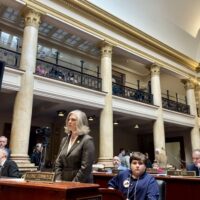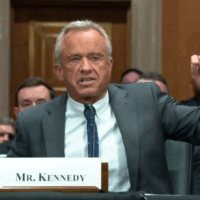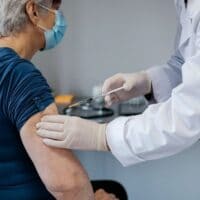Federal officials on a rural health webinar applauded the federal government’s efforts to expand telehealth during the coronavirus pandemic, and predicted its uptick will continue long after the crisis is over.
“I can tell you from personal experience that we are never going back,” said Dr. Jeff Colyer, a surgeon who chairs the National Advisory Committee on Rural Health and Human Services. “I’ve seen the majority of my patients via telehealth, and they like the convenience and the access that it gives them. And so we are going to see those changes continue on in the future.”
Bette Brand, deputy undersecretary for Rural Development in the Department of Agriculture , said, “The coronavirus has made the need for telehealth even more urgent. Its life-saving convenience is now underscored by its lifesaving ability to limit travel and unnecessary exposure.”
“What sounds to many like dry, obscure flexibilities in regulations and reimbursement is translating into millions of Americans getting access to healthcare more safely and more conveniently and we want everyone to know that.”
– Deputy HHS Secretary Eric Hargan
USDA has invested more than $751 million on its program to bring broadband to the 21 million Americans who lack high-speed internet access, 80 percent of whom are in rural areas, Deputy Secretary Stephen Censky said. He added that broadband is especially important as people are being asked to socially distance, and lets Americans “continue to access critical medical services remotely using telemedicine from their homes.”
Censky pointed to a USDA summary of recent changes to the program by the Department of Health and Human Services. Deputy HHS Secretary Eric Hargan called the changes “historic” and said they include, among other things, eliminating some barriers to Medicare reimbursement, enabling waivers or reductions of cost sharing, and allowing the use of everyday technologies, like FaceTime and Skype, in health care.
“In just about a month and a half, I think we’ve seen about seven or eight years worth of progress on telehealth,” Hargan said. “Really, it’s a revolution provoked by necessity. I’m excited to see what the future looks like based on getting patients and providers acclimated to the idea of telehealth in this way,” he said. “What sounds to many like dry, obscure flexibilities in regulations and reimbursement is translating into millions of Americans getting access to healthcare more safely and more conveniently and we want everyone to know that.”
Tom Morris, associate administrator for rural health at HHS, said telehealth resource centers have received $15 million, which have seen a tremendous increase in use: “You would not believe the volume increase that they have had. . . . The increase in their volume was well more than 1,000 percent of this time a year ago. And so the funding will better help them respond to that moving forward.”
The webinar was sponsored by the Rural Health Information Hub. Click here to learn more about Kentucky’s telehealth program.
Melissa Patrick is a reporter for Kentucky Health News, an independent news service of the Institute for Rural Journalism and Community Issues, based in the School of Journalism and Media at the University of Kentucky, with support from the Foundation for a Healthy Kentucky. She has received several competitive fellowships, including the 2016-17 Nursing and Health Care Workforce Media Fellow of the Center for Health, Media & Policy, which allowed her to focus on and write about nursing workforce issues in Kentucky; and the year-long Association of Health Care Journalists 2017-18 Regional Health Journalism Program fellowship. She is a former registered nurse and holds degrees in journalism and community leadership and development from UK.






